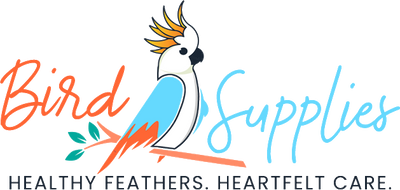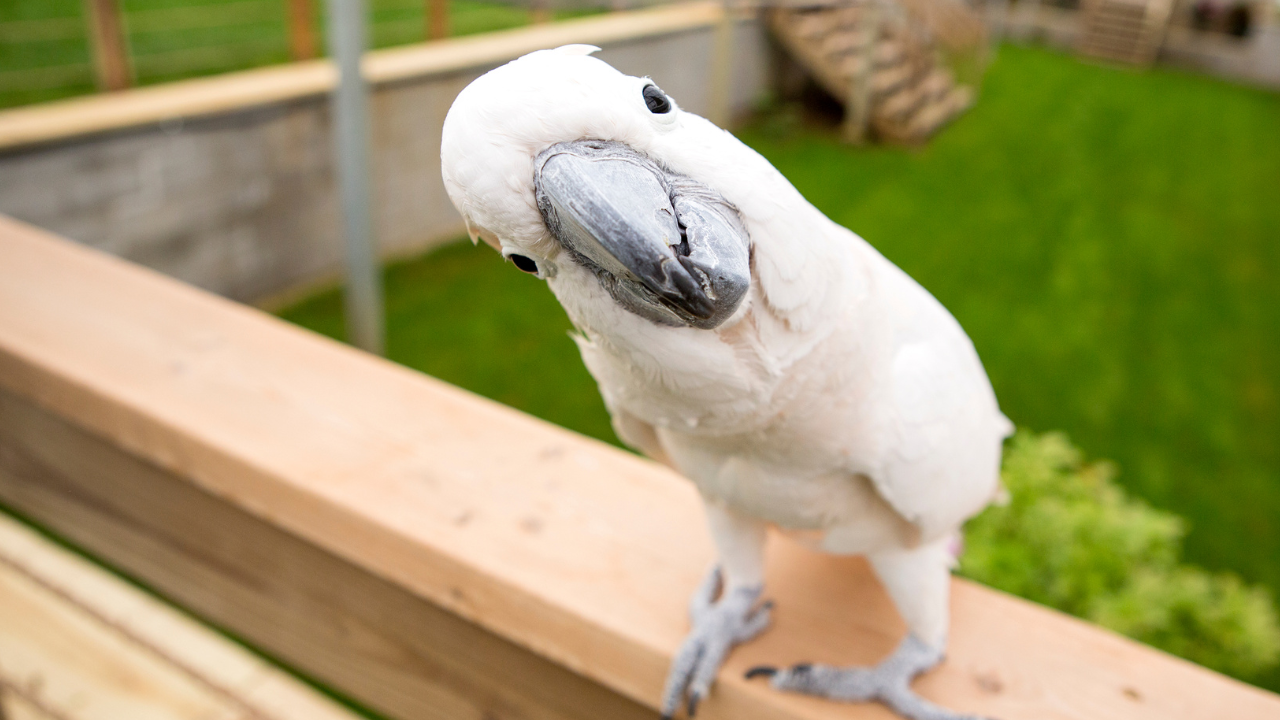Table of Contents
- Getting Started: Why Towel Training A Bird Matters
- When and Why You Might Need Towel Training
- Safety First
- Prepping the Scene: Setting Your Bird Up for Success
- The Tools You'll Need (Using Positive Reinforcement)
- Step-by-Step: How to Towel Train A Bird
- Keeping Your Bird's Skills Sharp
Are you wondering what technique you can use to restrain a bird safely? Then, you'll want to learn how to towel train your bird. We're not talking about grabbing your bird with a towel, but rather slowly training it using positive methods over the course of a few weeks.
In this blog post, we'll explore why towel training a bird matters, when and why you might need it, and how to towel train a bird safely. We'll also provide a step-by-step guide to help you get started and keep your bird comfortable throughout the process.
Getting Started: Why Towel Training A Bird Matters:
When you hear "towel training," you might wonder why it's necessary, especially for your beloved bird.
Towel restraint is a valuable skill that can improve the safety and efficacy of a vet exam, making it easier for both the vet and your bird. |
1. Vet Visits Made Easy: Imagine your bird needs a check-up or has a health issue. Towel training helps you and your vet by allowing your feathered friend to stay calm and cooperative during examinations. It minimizes stress for both you and your bird.
2. Safety in Emergencies: In unexpected situations, like accidents or evacuations, you'll need to handle your bird safely and gently. Towel training can be a lifesaver, helping you provide immediate care without causing additional stress or harm.
3. Grooming and Health Checks: Regular grooming and health checks are essential for your bird's well-being. Whether it's nail trimming, beak filing, or administering medication, towel training makes these tasks easier and less stressful for your pet.
4. Giving Medications: Some bird's are very resistant to taking medications. One way to administer meds "on the fly" is to towel your bird. (Another way is to teach them to take meds from a syringe, spoon, or small creamer.)
Safety First: Why You Must Be Careful of Your Bird's Bones and Air Sacs:
Before you dive into towel training, it's crucial to understand the unique physiology of birds. Birds have delicate bones and air sacs, making them more vulnerable to injury during restraint. That's why safety should always be your top priority:
-
Bones and Joints: Birds have hollow bones, which are lightweight for flying but susceptible to fractures. Be gentle and avoid applying excessive pressure to the bones and joints during towel training.
-
Air Sacs: Birds have several air sacs throughout their torso that are connected to their respiratory system. Restricting their movement or breathing during toweling can be harmful and sometimes even deadly. Never apply pressure to your bird's torso
- Anxiety: Birds are inherently prey animals, which means it's crucial to ensure their sense of safety when performing towel training or using a towel with them. When a bird becomes anxious, they may instinctively start flapping their wings as they try to flee thereby increasing their chance of sustaining an injury.
DO'S |
DON'TS |
| ✔️ Ask your vet to show you how to towel your bird. | ✖️ Never force-train a bird. |
| ✔️ Train your bird patiently over time. Pay attention to its body language so as not to startle a fear response. | ✖️ Never use a towel as a form of discipline. |
| ✔️ Make towel training a game, like "peek a boo." | ✖️ Never put pressure on the bird's torso. |
| ✔️ Maintain this skill so that you can use it in in the event of an emergency. | ✖️ Never forcefully move wings or legs. |
Prepping the Scene: Setting Your Bird Up for Success:
Before you start the actual training, create a peaceful and distraction-free environment. Most birds will learn to accept toweling quickly if you use positive reinforcement, keep it fun, and work at their pace. Setting up a calm and safe training environment will make all the difference.
-
Quiet Room: Choose a room that's free from noise and distractions, so your bird can focus on the training. A flat surface for training is also helpful.
-
Gentle Lighting: Use soft, natural lighting to create a calming atmosphere.
-
Tools and Treats: Have your training towel, your bird's favorite treats within easy reach, and a "clicker."
The Tools You'll Need (Using Positive Reinforcement):
You don't need much to get started with towel training, but a few essentials are crucial:
-
A Small Towel: Pick a small, lightweight towel that's gentle on your bird's feathers. Softness and comfort are key.
-
Treats: Gather your bird's favorite treats. Positive reinforcement is the secret sauce in this training process. It rewards your bird for cooperation and helps ease any initial discomfort.
-
Clicker: Use a clicker to mark the exact behavior that you want the bird to elicit.
-
Parrot Calming Formula may be helpful for anxious birds.
Step-by-Step: How to Towel Train Your Bird:
Now, let's dive into the action! Towel training can be challenging, but with patience and positivity, you and your bird can master it together. Here's a step-by-step guide to get you started:
-
Introduce the Towel: Begin by slowly showing your bird the towel. Make it a game of "peek-a-boo" or stand the towel up like a tent and teach your pet to walk under it. Let your bird inspect and approach the towel at its own pace. If your bird shows curiosity, reward the behavior with treats. If it is scared, slow down.
-
Touch the Bird with the Towel: Gently touch your bird's feet or beak with the towel while offering treats. Gradually work your way up to more sensitive areas. Keep the experience positive, and let your bird know that it's safe.
-
Wrap the Bird Gently: As your bird becomes comfortable with the towel touching it, start gently wrapping the towel around its body, leaving the head exposed. Offer treats to reward increasing levels of acceptance.
-
Swaddle Your Bird: Once your bird is at ease with the initial wrapping, gently swaddle it in the towel, making sure it can still breathe comfortably. Keep the treats flowing each level of progress.
-
Unwrap Your Bird Gradually: Slowly unwrap the towel while providing treats to reward your bird's cooperation. This helps your bird associate the towel with safety and treats.
-
Practice and Extend: Repeat these training sessions regularly, gradually increasing the duration of wrapping to about the length of time that it takes your vet to examine your bird, 10 minutes or so. The more you practice, the more your bird will become accustomed to the process. Keep the atmosphere positive and full of encouragement.
Keeping Your Bird's Skills Sharp: Maintaining Comfort With Towel Handling:
-
Regular Practice: Continue with short and positive training sessions to reinforce your bird's comfort with the towel once a month.
-
Bonding Time: Use these sessions as opportunities to bond with your feathered friend. Petting and talking to your bird during training can build trust.
-
Be Patient: Every bird is unique, and some may take longer to adjust to towel training than others. Be patient and adapt your approach to your bird's individual needs.
In conclusion...
In conclusion, towel training your bird is a valuable skill that can improve the well-being of your feathered friend and make your life as a pet-loving adult easier. By understanding the importance of towel training, practicing it safely, and using positive reinforcement, you can ensure that your bird remains comfortable and calm during vet visits and other necessary procedures. So, embrace the process, bond with your avian companion, and remember that in the end, it's all about ensuring the health and happiness of your beloved bird. Happy training!
Related Posts:
Perfecting Your Bird Grooming Skills
References:
National Bird Day. (n.d.). Shelters are full of parrots - Making the connection: Pet trade, birds in crisis, and saving lives. https://www.avianwelfare.org/shelters/pdf/NBD_shelters_parrots.pdf
Hagen Avicultural Research Institute. (Unknown Publication Date). First Aid Practice Makes Perfect When It Comes to Towel Restraint. HARI. URL: https://hari.ca/first-aid-practice-makes-perfect-when-it-comes-to-towel-restraint/
Management of Pet Birds. (Unknown Year). Merck Veterinary Manual. URL: https://www.merckvetmanual.com/exotic-and-laboratory-animals/pet-birds/management-of-pet-birds
Link to this blog
Burroughs, D. (2023). How to Towel Train a Bird: A Step-By-Step Guide. BirdSupplies.com. URL: https://birdsupplies.com/blogs/news/how-to-towel-train-a-bird-a-step-by-step-guide
Diane Burroughs, LCSW is a licensed psychotherapist trained in ABA therapy techniques. She specializes in avian anxiety disorders and is certified in Nutrition For Mental Health. Diane has written a number of bird behavior books and she offers behavior consultations. She's developed a range of UnRuffledRx Science-backed Parrot Wellness Supplies.
Diane's products have been featured in the Journal of Avian Medicine and Surgery and at Exoticscon, a conference for exotic pet veterinarians. Her bird collars & supplements are stocked in avian vet clinics and bird stores throughout the US. With over 30 years in the field of behavior, Diane has created thousands of successful individualized behavior plans that help pets thrive.
TAGS: #BirdStress #BirdSelfMutilation
SHARING IS CARING! PLEASE SHARE ON YOUR FAVORITE SOCIAL MEDIA NOW!
Towel restraint is a valuable skill that can improve the safety and efficacy of a vet exam, making it easier for both the vet and your bird. Dr. Karen Becker |




